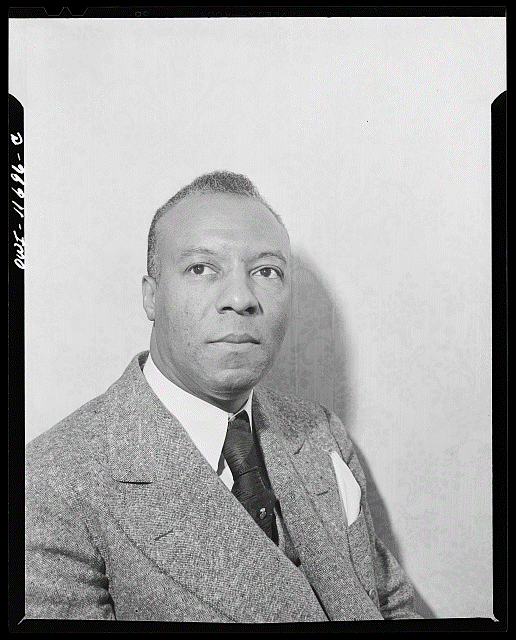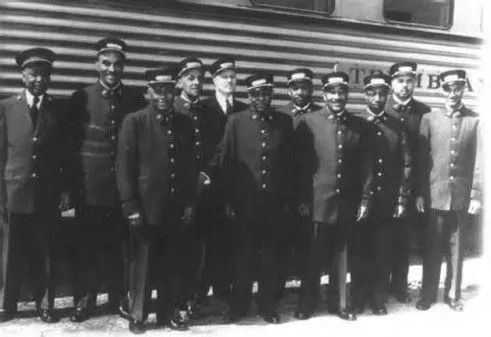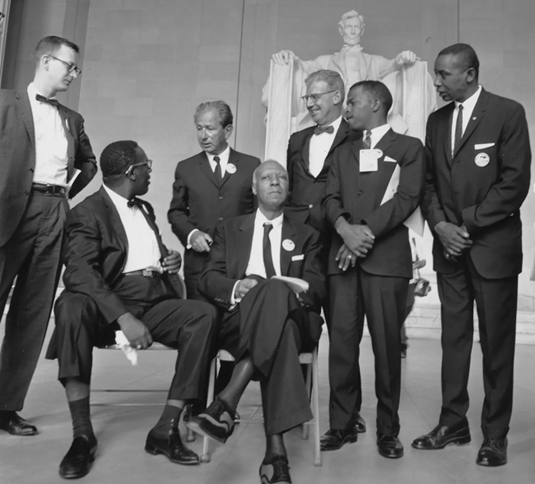Published: February 13, 2025
This year's theme is "African Americans and Labor"
February is Black History Month, and we invite you to observe the achievements of African Americans in U.S. history. Read President Donald Trump's remarks in this year's Black History Month Proclamation.
This year’s theme emphasizes Black Americans' significant contributions to the workforce throughout history. This year also marks the 100th anniversary of the Brotherhood of Sleeping Car Porters and Maids (BSPC). This was the first Black union to receive a charter in the American Federation of Labor. This year, we spotlight the contributions of activist A. Philip Randolph, the union's founder and labor organizer.
“I think that throughout the earliest days, even before the time when Rosa Parks or Martin Luther King, Jr., were famous, there was a sense throughout our Nation that A. Phillip Randolph stood for higher aspirations and equality of black Americans. He organized the Brotherhood of Sleeping Car Porters in 1925. He was the vice president of the AFL-CIO, organized the first March on Washington For Civil Rights in 1941. He’s a native of Florida. This year he’s 90 years old. And I think that those who came later obviously saw him as having set a courageous example to be emulated. And Bayard, I hope that you will extend to Mr. Randolph my appreciation, recognition, and my friendship for the superb leadership that he gave many of those others who are being honored here in the White House this afternoon.”
Nearly every railroad in the South before the Civil War was built using slave labor. During the Civil War, thousands of African Americans were employed by the U.S. Military Railroads (USMRR) to move men and materials. Although virtually no records exist, "Historians are confident that African American workers contributed monumental efforts to the completion of the Transcontinental Railroad." (Source, National Park Service (NPS)
Image: Parks, Gordon, photographer. Washington, D.C. Portrait of A. Philip Randolph, labor leader. 1942. Library of Congress Prints and Photographs Division
After the railroad was completed, African Americans worked in many capacities, including engineers, porters, and firefighters. The Pullman Company was the nation's largest employer of African Americans during this time. The Brotherhood of Sleeping Car Porters was founded in 1925 and was instrumental in advocating for equality and labor rights. Randolph rose to political prominence through his work with organized labor as a pioneer in advancing racial equality within the labor movement. He led campaigns to improve wages and working conditions for Blacks and whites.
Image: African American porters stand in front of a Pullman Company sleeping car. Source, National Park Service
Randolph worked with President Roosevelt's administration in drafting Executive Order 8802 (See p. 7395). This Order was issued In June 1941, banning discriminatory employment practices by Federal agencies and all unions and companies engaged in war-related work. The order also established the Fair Employment Practices Commission to enforce the new policy banning discrimination in defense industries, Federal employment, and the armed services. In July 1941, Executive Order 8823 provided for an additional Committee on Fair Employment Practice member in the Office of Production Management, established by Section 3 of Executive Order No. 8802.
Image: A Philip Randolph (seated, center) with leaders of the 1963 March on Washington: (from right to left) Mathew Ahmann, Cleveland Robinson, Rabbi Joachim Prinz, Joseph Rauh Jr, John Lewis, and Floyd McKissick. National Archives Photo
As one of the organizers of the 1963 March on Washington, Randolph fought for the oppressed of all races. In Martin Luther King Jr.'s 1967 Poor People's Campaign, he included Randolph's ideas about economic justice and the importance of Black people being fully recognized as citizens. In 1964, Randolph received the Presidential Medal of Freedom, and in 1965, he founded the A. Philip Randolph Institute in Washington, D.C., to continue the struggle for social, political, and economic justice for all working Americans. In 1968, due to health issues, Randolph resigned as President of the BSCP. He died at 90 at his home in New York City on May 16, 1979.
Additional Resources
- Learn more about A. Philip Randolph on the National Park Service's website.
- Read more about Executive Orders 8802 and 8803 in the publication, "1941 Minorities in Defense" . This content is made publicly available through a collaboration between the U.S. Government Publishing Office and the Utah State University Libraries. This publication includes President Roosevelt's letter to the Committee on Fair Employment Practice regarding discrimination in the Federal service, his letter to heads of all Government departments and independent establishments regarding the same, and a chronology of the steps taken to prevent discrimination in the defense program.
- Take a look at the the Department of Labor's "Hall of Honor Inductees" webpage which recognizes individuals and groups whose distinctive contributions to the field of labor have enhanced the quality of life of millions - yesterday, today, and for generations to come. Nominees are considered on a rolling basis, and formal induction ceremonies are conducted at the U.S. Department of Labor in Washington, D.C. You can read more about each honoree by clicking the names listed. Randolph was a 1989 Inductee.
About Featured Content Articles – This series of articles aims to highlight content available in GovInfo related to various national observances, commemorations, anniversaries and more. See more featured content articles.


